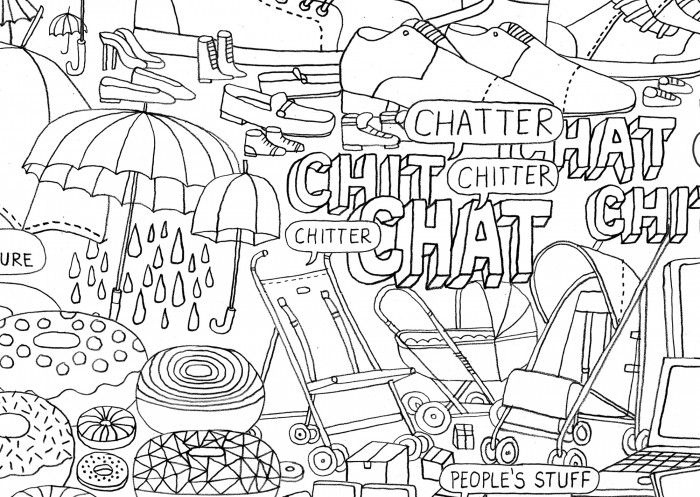Last-Minute NYC Holiday Gift Guide 🎁
We’ve created a holiday gift guide with presents for the intrepid New Yorker that should arrive just in time—


In addition to the polar vortex, January was the month for the installation of three new art posters in the subway as part of the MTA Arts for Transit and Urban Design, a program that has been going on for well over thirteen years.
The New York City subways are known for many things, and at Untapped Cities, we’ve been showing you all the art you can see on your daily commute today and what you’ll see in the future on the Second Avenue Subway. Each weekday over five and a half million people ride the subway, and that’s a whole lot of eyeballs looking for a place to alight.

Playing with scale. A close-up of one of the 2014 posters from artist James Gulliver Hancock of All the Buildings in NY.
In the early 1900s the founders of the New York City subway, a mix of city officials and private enterprise, believed that the experience of travel should be enhanced by the surrounding design. In the eighties, after years of neglect, Arts for Transit was created as just one element in an ambitious capital improvement program. The Art Cards were launched by the MTA in 1999 and were modeled after its Poster Program. The primary goals for both are to support the vision of those early founders, to enhance the station environment. Stations today are rehabilitated with art in mind, such as the addition of local nautical charts at the Smith-9th Street station in Brooklyn, a renovation completed last year.

Stuff on the subway. Poster close up from artist James Gulliver Hancock.
“The artists don’t need to be from New York,” Amy Hausmann, Deputy Director of the transit group told Untapped Cities, but they do need to “have an understanding of the subway.” Each year the MTA staff seek out artists, illustrators, collagists and more, looking for that right blend of whimsy and fun to add to their curated program of public art.

Artist Susan Farrington 2014 MTA Subway Art Card titled, “Robots.”
The two artists chosen this year, James Gulliver Hancock, who grew up in Sydney, Australia and Susan Farrington, from New England, prove they totally get the underground life of the city, as if they were locals with thick accents to prove it. The artists are paid a small honorarium, but as Hausmann wisely pointed out, their artwork is up for an entire year and gets seen by upwards of 1.6 billion annually, a larger figure than the number who watched the Super Bowl, in case you’re curious.

Artist James Gulliver Hancock 2014 MTA Subway Art Card. His poster was influenced by what people bring on the subways.
The art cards, installed just above the windows of the subway car and underneath the highlighted stop listings, will reward the patient gaze of visitors and locals alike. When you spot them, take time to look closely–you’ll notice strange and wonderful things like buildings that look like bugs, a vast swath of stuff people lug on the subway, from tennis rackets and cameras to strollers and basketballs, and finally, a few ordinary objects enlarged to extraordinary proportions.

Artist James Gulliver Hancock 2014 MTA Subway Art Card. His poster shares the notion that New York tweaks our sense of scale.
The posters are for sale at both locations of the Transit Museum, the main branch in Brooklyn Heights, which is in a decommissioned station, and their annex, which is located in Grand Central Station. All proceeds from the sales go back into the Transit Museum. See the previous years designs too.
The Arts for Transit and Urban Design group are coming out this month with their poster program, vertical posters displayed throughout the stations, and there’s more planned for the year, such as concerts, photography installations and more. To keep tabs on their announcements, or if you’re a train-loving artist, you can follow the group on Instagram, Facebook, Tumblr and Twitter.
Subscribe to our newsletter